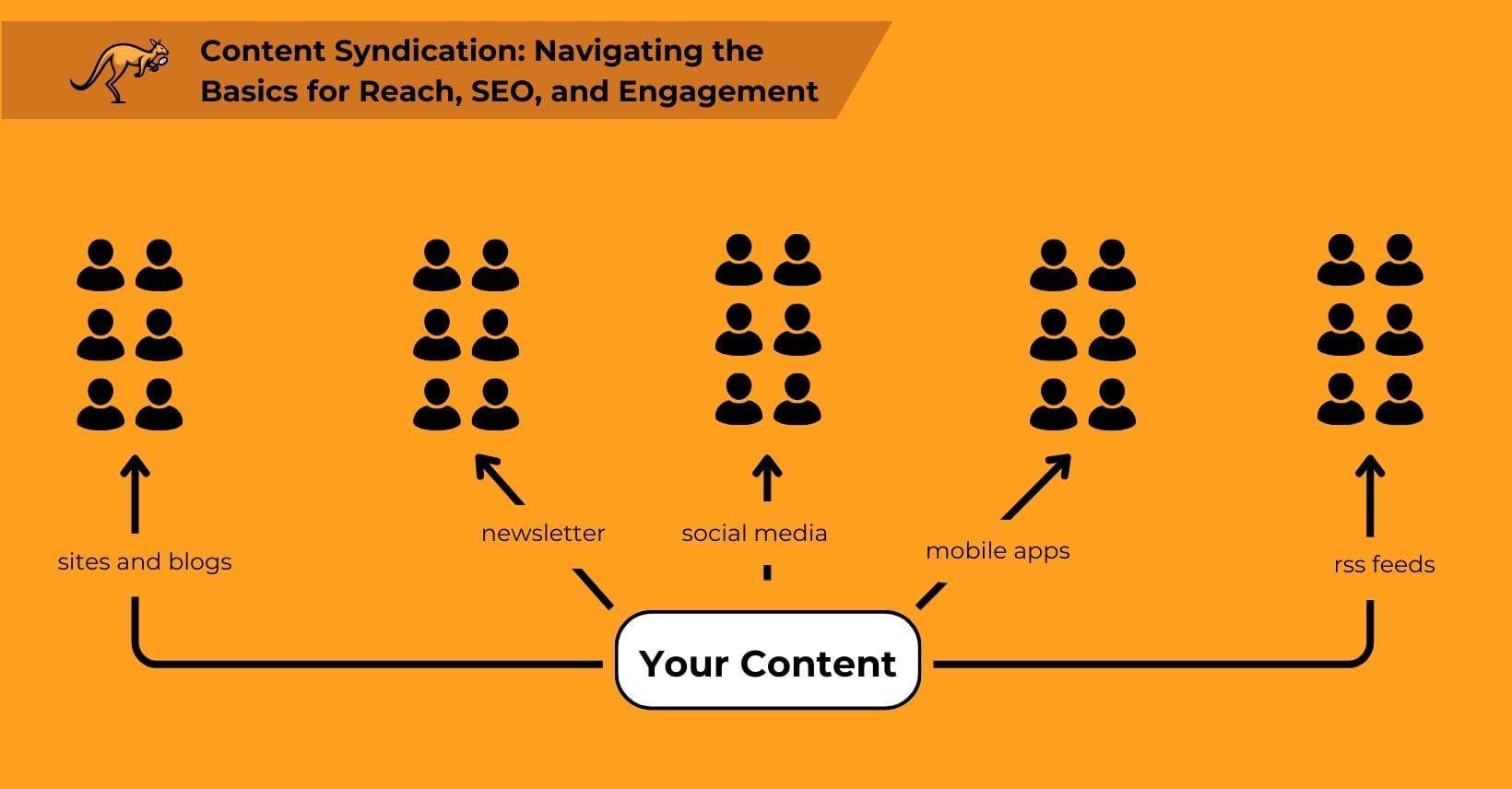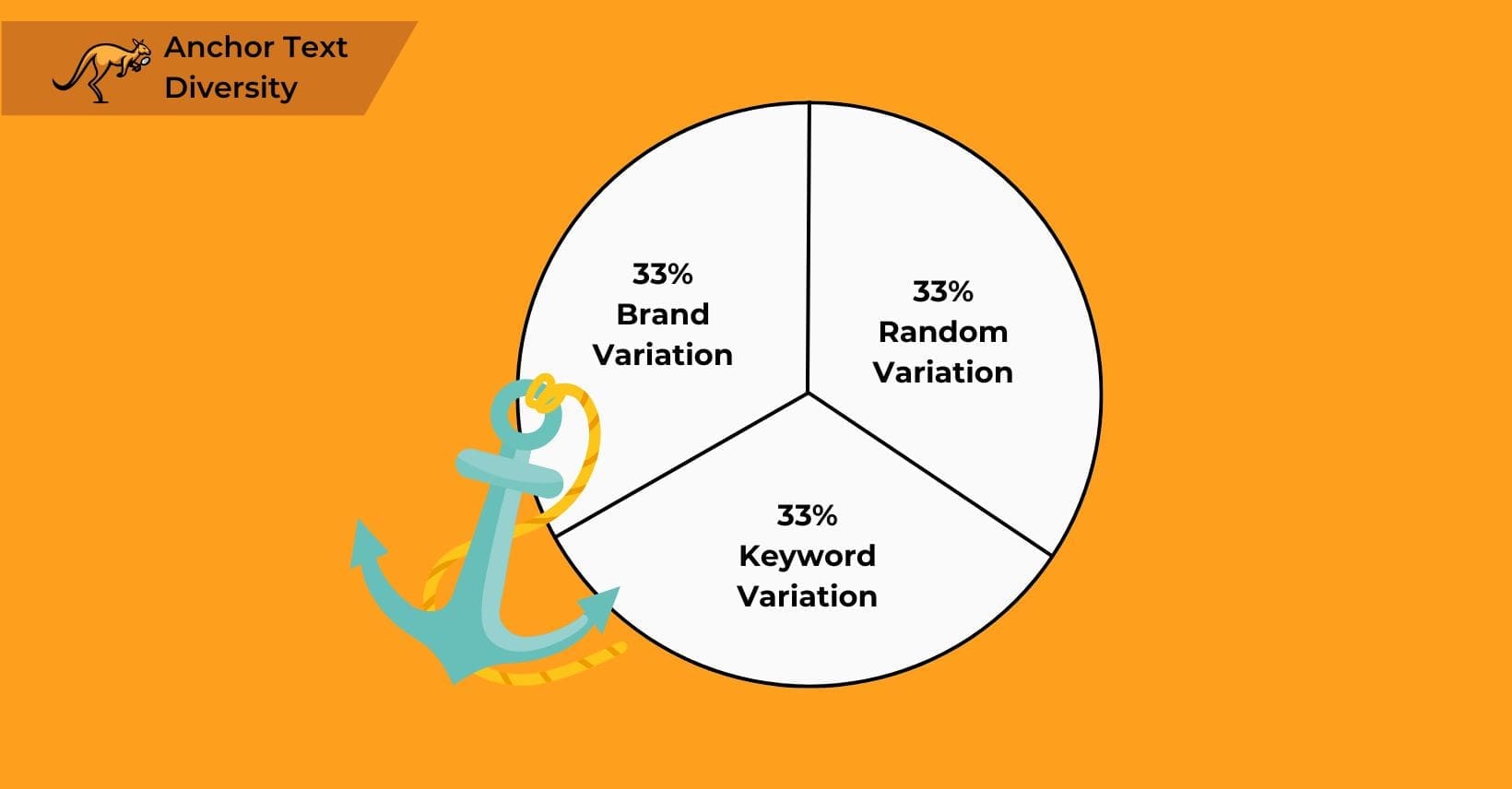Content syndication is a digital marketing strategy that involves republishing your original content across various third-party platforms, which expands your reach beyond your own website to connect with broader audiences.
Aimed at increasing brand awareness and driving more traffic, it has garnered significant interest among SEO experts.
However, the effectiveness of this approach relies heavily on the execution.
Understanding the specifics of syndicated content and its operation can offer valuable insights into making this strategy work for you.
What is Syndicated Content
Syndicating content involves distributing your material to new audiences via other platforms, such as specialized networks or individual blog sites.
By collaborating with influencers and content creators within your industry or niche, you can extend your reach to different platforms, each targeting a distinct audience that intersects with your own.
Selecting the right syndication partners and properly tailoring your content can expose your material to new audiences, significantly expanding your original reach.
As your content reaches broader audiences, the advantages of this strategy become increasingly clear.
The Benefits of Content Syndication

Syndicating content expands your reach by distributing your creations beyond your website or blog, which generates increased brand visibility, establishes authority in your industry, and creates valuable backlink opportunities. Placing content on third-party sites amplifies your content marketing strategy, reaching a much larger audience.
This approach boosts brand awareness when you choose relevant partners and establishes you as a trusted authority. A wider audience is likelier to spread your message and visit your site directly.
Additionally, arranging for links to appropriate pages can drive consistent traffic from third-party platforms to your site. Even if the direct traffic from the links is minimal, the SEO benefits from relevant websites are substantial. Leveraging this method for lead generation enhances both SEO and traffic while introducing a new target audience for potential leads.
To understand how this process works, let’s explore how content syndication functions.
How Does Content Syndication Work?
Content syndication hinges on producing quality content and finding platforms that permit sharing, following a process where you create valuable content, identify suitable publishing partners, arrange republication terms, and track performance across platforms.
This approach goes beyond commenting on major blogs or creating business directory profiles, which are typical SEO tactics. Instead, content syndication involves republishing your site’s original content on other websites that accept syndicated material.
Despite concerns about duplicate content, the goal is to avoid redundancy and maximize exposure, with properly implemented content syndication actually benefiting SEO through increased backlinks, greater content visibility, and expanded audience reach when canonical tags or proper attribution are used. But how does one connect with these platforms and ensure the effective distribution of syndicated content? This is where the syndication networks come into play.
Syndication Networks
A content syndication network comprises various partner websites and platforms, each open to publishing syndicated content across interconnected sites, which function as distribution channels for your content to reach relevant audiences. Typically, when content is posted on one site, it appears on multiple sites within the same network.
Often, these networks feature sites on related topics that don’t directly compete, such as video game blogs and VR tech blogs.
These content syndication services, which are frequently paid, facilitate the distribution of your content to different target audiences, moving the same material from one blog or article to another without triggering issues with search engine platforms.
This approach, however, does lead to certain considerations about content replication and its effects on search engine performance.
Duplicate Content
As mentioned, it’s well-known that Google and other search engines disfavor duplicate content. However, syndicated content differs as it is posted with explicit permission and links back to the source, even on paid content syndication platforms. Most syndication platforms include disclaimers like “this article originally appeared on [website link] and has been published with permission” or “this article was originally published at [post link].”
These disclaimers are crucial as they indicate that the content is republished legitimately, not stolen. Sometimes, paid content syndication might add extra paragraphs or comments to distinguish the syndicated content from the original. However, this isn’t always the case.
Now that we’ve clarified the legitimacy of syndicated content, it’s time to explore its impact and implications.
What Happens When You Syndicate Content?
Syndicating content initiates a process where your content is disseminated to third-party websites. This marks the beginning and end of your syndication strategy. Search engines generally accept syndicated content if proper attribution and guidelines are followed. The specifics of this strategy depend on your agreement with the network and the nature of your content. Intrigued to discover the ins and outs of optimizing your content syndication?
What to Know About Choosing A Content Syndication Strategy

There are various approaches to consider when syndicating content. Each method ultimately leads to your content being featured on a third-party website or network of sites. However, there is no definitive strategy for managing this process seamlessly.
Let’s explore the list of strategies that align with your objectives.
Choosing Content
If you want to syndicate your content, you need decent content to syndicate in the first place, selecting high-performing pieces with evergreen topics, strong engagement metrics, and broad appeal that align with your target audience’s interests. Ideally, you would choose existing content to minimize the extra effort required, but this will not always be a viable option.
Like any content marketing strategy, you need to think about quality and relevancy first and foremost. Content syndication is about placing your content in front of new audiences who are still interested in what you can offer and that you have a reason to target in the first place.
This means that you need to consider which content would most likely gain extra attention across those sites or networks. Even if it is not necessarily the most relevant content to your business, something highly relevant to those audiences can be just as powerful.
Remember that there are many ways to approach syndication, depending on who you work with. You may be able to arrange for alternative titles or slightly adjusted versions of the content that are more in line with what their audience will be willing to read.
Choosing Sites and Networks
When choosing sites and networks for content syndication, evaluate their audience demographics, domain authority, content quality, and industry relevance, which ensures your content reaches the right readers and provides maximum SEO benefit. Syndication choices impact SEO differently, emphasizing the importance of content marketing over mere site traffic.
Consider the typical formats and guest post preferences of syndication platforms; acceptance and performance may suffer if they differ significantly from your content.
As we navigate the intricacies of content syndication, let’s consider the dynamics between free and paid options and their implications for your strategy.
Free vs. paid Content Syndication
There are both paid and free options for content syndication, which differ primarily in reach, targeting capabilities, and required effort. Free syndication is simpler if you’re taking a DIY approach, requiring manual outreach but costing nothing beyond time investment. The goal is to place your articles where they’re relevant and gain attention. Sites like Reddit and Quora can be valuable for free lead generation, but subtlety is key.
Paid syndication is less hands-on, republishing your article where niche audiences will find it, offering guaranteed placement, advanced audience targeting, and performance analytics that free options typically lack. Both options are effective, with budget as the main limitation.
Next, let’s go into strategies for maximizing syndication success, ensuring your content reaches its intended audience.
Pitching Your Content
Content syndication revolves heavily around securing acceptance for the content. Payment alone doesn’t guarantee approval; these platforms uphold quality standards. They operate as major publications seeking valuable content.
Hence, for a syndicated article to be viable, it must align with their standards, ensuring it doesn’t dilute their brand. Familiarize yourself with their editorial guidelines and content selection criteria. Given that networks enforce consistent standards across their sites, this diligence is crucial.
With acceptance secured, it’s time to explore further ways to amplify the reach and impact of your content.
Arranging the Content Syndication
Arranging content syndication involves various considerations, such as determining the placement of contextual links and adapting article titles for different platforms. Additionally, there’s the task of revising sections of blog posts or incorporating supplementary commentary to present the article as a guest post. The acceptance of these modifications depends on contextual factors within the network.
Understanding these intricacies sets the stage for effectively leveraging syndicated content. Transitioning to the practical utilization of syndicated content involves exploring its impact.
Using The Syndicated Content
Once your content is syndicated, it’s crucial to maximize its impact. Syndicated content not only expands your reach but also boosts traffic and SEO.
For instance, if you’re executing an account-based marketing strategy, syndicated content can outperform native advertising in driving sign-ups and engagement. To fully leverage this traffic, ensure your landing pages are optimized for conversions.
Whether it’s directing users to original articles or crafting bespoke landing pages, capitalize on new audiences effectively. Ready to learn more about optimizing syndicated content? Let’s explore the summary of Syndicated Content for a recap.
Comprehensive Overview
Content syndication offers a strategic avenue for extending the reach of your content across diverse platforms, amplifying brand visibility, and driving increased traffic.
The success of this approach hinges on meticulous execution, including selecting appropriate syndication partners and tailoring content to resonate with distinct audiences.
Despite concerns about duplicate content, legitimate syndication practices, proper attribution, and adherence to guidelines mitigate potential SEO issues. By leveraging syndicated content effectively, businesses can tap into new target audiences, enhance SEO performance, and foster lead generation.
Syndicated Content FAQ
Content syndication can be fairly confusing if you are brand new to it, especially if you are not entirely sure how the process is meant to work as part of your overall marketing.
Here are some answers to frequently asked questions that might clarify a few things or set you on the right path.
Is Content Syndication Allowed by Search Engines?
The answer to this question is yes and no, and it depends entirely on whether the content is actually syndicated.
With the right disclaimers in place, content syndication does not create duplicate content issues that harm SEO, and search engines will not penalize two sites for having duplicate content when proper canonical tags, attribution links, or noindex directives are implemented.
Search engines do not like duplicated content and will generally demote pages or remove them entirely if they are found to contain identical text. Without the right disclaimers and link types, expect SEO penalties rather than benefits.
What’s The Easiest Way to Pitch Content Syndication?
A well-written and highly-customized outreach message is usually the easiest way to pitch content syndication.
For a start, ensure the platform knows who you are and that you have read their editorial guidelines before pitching anything.
Remember: it is not all about the article itself, and they will have a very specific style or format they want the articles on their platform to have.
Do I Need To Pay for Content Syndication?
Not at all; many content syndication opportunities are absolutely free and a great way to build your lead generation list and improve your backlinks.
Paid content syndication can be useful if you target specific audiences and want more effective or larger-scale results.
How Does Google Choose to Display Syndicated Content?
Since most content syndication involves repeatedly using the same original content, Google tries to avoid sharing it from every site at once.
According to Google Search Central, the Google platform will always show each user the most “appropriate” (most likely meaning relevant) version of the content.
Does Content Syndication Work on Social Media Platforms?
Content syndication does not only apply to blogging or web-based syndication. You can spread your original content through other means, like social media posts, email newsletters, or even press releases.
Of course, this all depends on which options work best for you and what opportunities you can find to promote your content.
How Do I Choose Good Content Syndication Platforms?
Before choosing the right content syndication platforms, you must determine your digital marketing goals.
What do you want to get out of the process? What kind of audiences are you targeting, and why?
Major publications are always good for an effective syndicated page and valuable backlinks. Still, they can be highly picky and may not even allow paid syndication.
How do I Know If Another Website Has A Relevant Target Audience for My Business?
All third-party websites have a target audience, and you must consider if your audience matches theirs or overlaps. In some cases, this could mean you can get a better return on investment than on other platforms.
However, suppose the two audiences are too different. In that case, the backlinks (and the content itself) might be irrelevant or low-quality.
Like any other form of digital marketing, you must research sites before you work with them.
Is Paid Syndication Always Better?
Paid syndication can yield better results, but many factors must be considered. You must be able to afford to pay, you must have the right audience, and you must pick your sites and networks carefully.
Free options can be just as effective in the right circumstances, even if they require more legwork.
In general, a service you pay for will at least be more reliable, especially if there is a legal agreement in place that prevents them from simply walking back on their agreement after you have paid them.
Does All Syndicated Content Need To Be The Full Article?
Not all syndicated content needs to be the entire original article. Sometimes, only a section will be taken. Sometimes, a site will syndicate just the headline with a link to the original site.
This can depend a lot on the syndication platform, what their audience wants to see, and how well the content would work in their context.
Is Article Syndication Reliable?
As long as you are working with relevant networks, content syndication can be highly reliable.
The only real risks come from poor decisions or working with networks that are not entirely trustworthy. Still, these are usually obvious scams or poor-quality groups only looking for easy money.
Should I Use Other Marketing Methods Alongside Syndication?
The answer to this question is definitely yes.
Content syndication, no matter what kind, is rarely an end-all-be-all strategy for marketing, and you will need a full approach to make the most of what it can do.
While it can be powerful, it is not a single-step way of overhauling your marketing – just another piece of a larger puzzle.
In addition, if you do not use any other digital marketing methods, there is no guarantee that content syndication will work perfectly for you. You need a mix of marketing techniques and tools in your business’ arsenal to get the most out of the process.





